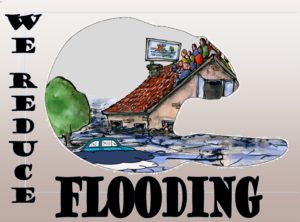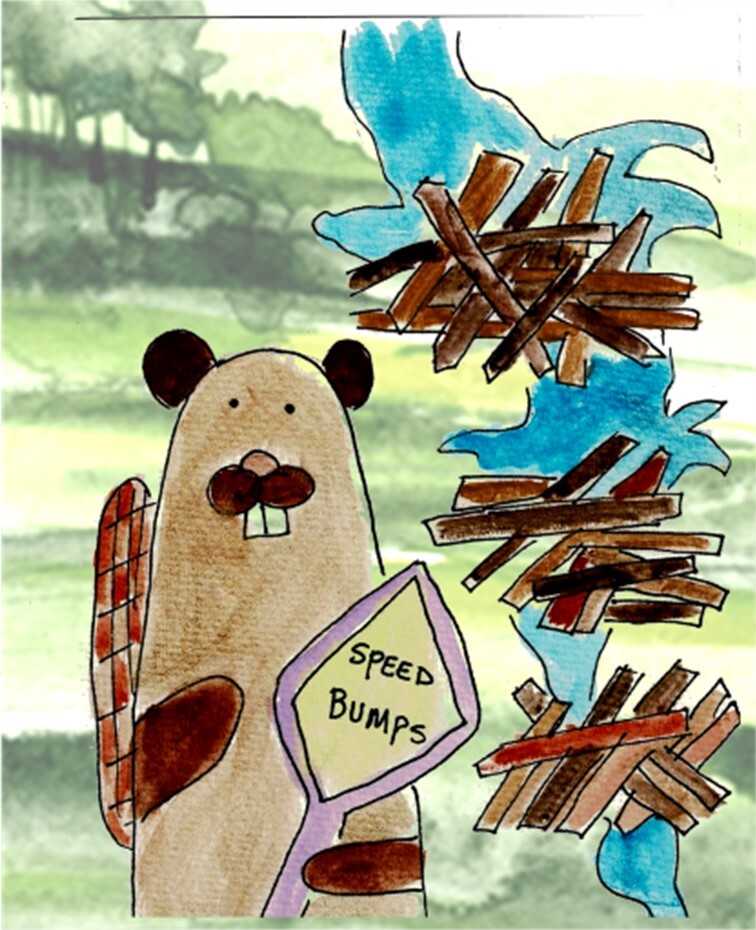You know sometimes the science site phys.org prints articles are obviously about beavers without saying anything about the beavers themselves? You know they’ll be some headline like “coppicing trees makes more habitat for songbirds” or “Dense woody material piled at intervals in streams creates a better invertebrate population which leads to fatter fish“. It’s kind of become a running joke around here. But this is the most egregious example I believe I’ve ever seen.
 Wetlands offer greater cumulative benefit for flood control: Study
Wetlands offer greater cumulative benefit for flood control: Study
Adding multiple smaller wetlands to the landscape can make large reservoirs more effective at flood control, according to a new study from Tulane University published in Environmental Research Letters.
Using the Brazos River basin in Texas as a case study, researchers modeled more than 140 wetland scenarios and compared performance against existing dams. They found a series of decentralized wetlands provide significant cumulative flood reduction and additional storage.
“Our analysis provides science on how to plan nature-based solutions to improve efficiency of built infrastructure,” said lead investigator Reepal Shah, a research scientist at Tulane University’s Bywater Institute. “Properly sited wetland portfolios can provide comparable flood mitigation on a per-storage basis.”
You are kidding me! Multiple small wetlands are better than one big one? Well how the heck are we supposed to find funding for that? It’s not like we can just magically make them appear or that money grows on willow trees!
Key findings of the study include:
- Multiple small wetlands offer greater cumulative benefit than a single large wetland of the same total area, highlighting the value of distributed natural infrastructure.
- Wetlands ranked by flood storage capacity and sequentially added to portfolios provide diminishing returns after approximately 30 sites, indicating not all wetlands perform equally.
- The top 18 wetlands could expand the basin’s flood pool by 10% of the largest reservoir’s capacity, showcasing wetlands’ potential as complementary storage.
- An index comparing impact per unit storage found well-designed wetlands efficacy is comparable to existing dams in flood control efficacy.
“This suggests wetland construction may relieve pressure on aging reservoir systems if done strategically,” said John Sabo, co-author and director of the Bywater Institute. “The findings can help practitioners identify robust wetland portfolios to sequence implementation and maximize gains.”
The modeling framework couples established land surface and hydrodynamic models to assess flood mitigation outcomes under different wetland scenarios. The researchers plan to further refine the approach and engage stakeholders on utilizing natural infrastructure to improve basin flood resilience.
The findings have important implications for flood management strategies globally. By incorporating strategically placed wetlands into existing infrastructure, communities can enhance their resilience to flooding events. This approach not only provides additional flood storage capacity but also promotes the preservation and restoration of natural ecosystems.
 You are pulling my leg! You mean that dotting wetlands around in areas can reduce the impacts of flooding caused by climate change? Gosh!
You are pulling my leg! You mean that dotting wetlands around in areas can reduce the impacts of flooding caused by climate change? Gosh!
If only there were some free way to create wetlands without paying for them…you know like some kind of thing that could make them and maintain them and fix them for free….
I can’t imagine what that could be, can you?








































